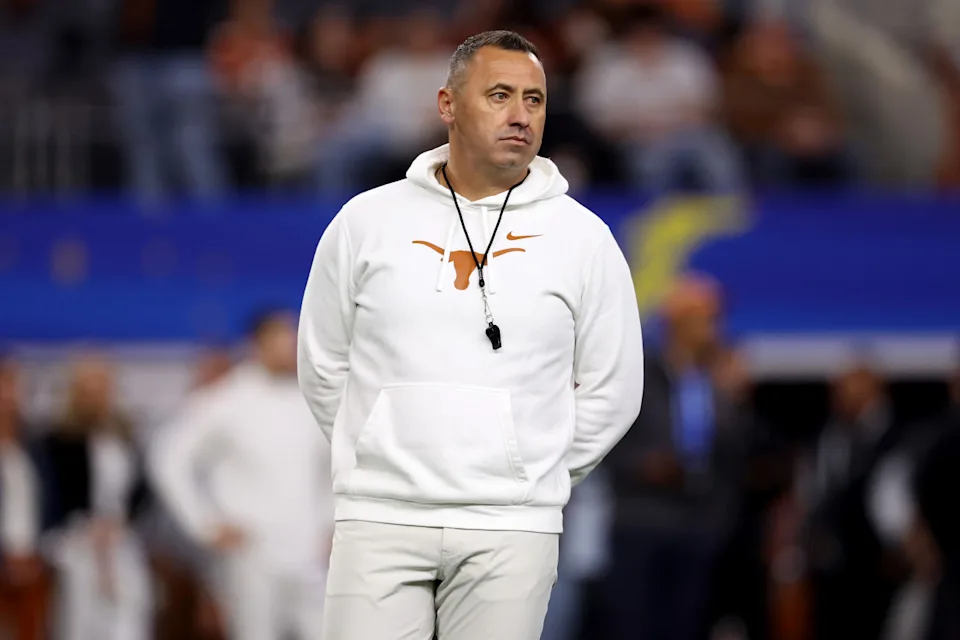
The college football world thrives on tradition, rivalries, and high-stakes matchups that fuel fan passion and national conversation. So, when reports surfaced this week indicating that Ohio State and Texas are slated to face off in a future game, what should have been met with excitement instead triggered a wave of discontent among fans. Social media was ablaze with criticism, and message boards flooded with takes questioning the decision. While some welcomed the clash of two blue-blood programs, a loud and growing chorus voiced frustration over everything from scheduling politics to competitive imbalance.
The matchup, reportedly set for a neutral-site kickoff in a high-profile venue, was supposed to be a marquee addition to an already loaded college football calendar. Yet many fans—particularly those of Ohio State—were quick to point out their dissatisfaction. Among the chief complaints was the loss of home-and-home tradition, with critics lamenting the neutering of college football’s unique atmospheres in favor of NFL-style neutral fields and corporate spectacle.
“We want to see Texas in Columbus. We want to go to Austin,” one fan posted on X, formerly Twitter. “This is college football. It’s about campus pride, not just TV ratings.” The sentiment echoed across fanbases who believe that games like Ohio State vs. Texas should be celebrated in historic college towns, not packed into stadiums more suited to Super Bowl Sunday.
Another criticism stemmed from the already grueling schedules both teams face in the evolving landscape of college football. Ohio State, a perennial College Football Playoff contender, will soon have to navigate a Big Ten that includes USC, Oregon, Washington, and UCLA. Texas, freshly minted as an SEC program, faces its own weekly gauntlet that includes Alabama, Georgia, LSU, and Oklahoma.
“Why are we adding a game like this when we already play Alabama and Georgia in the same year?” one Texas fan asked in a Longhorns subreddit. “This feels like setting ourselves up to fail.”
Some viewed the decision as more about television contracts and marketing value than the student-athlete experience or fan traditions. With conferences realigning and television networks wielding more power than ever, fans fear that the heart and soul of college football is being compromised.
“It’s not about the players anymore, and it’s certainly not about the fans,” said a long-time Buckeyes supporter. “It’s about whoever can make the most money off the broadcast rights. That’s the only rivalry that matters now.”
In fairness, some corners of the college football world did welcome the news. High-profile matchups like Ohio State vs. Texas bring prestige, playoff implications, and national exposure. Recruits pay attention. Media buzz explodes. Ticket sales soar. But even those in favor of the game criticized the execution.
“I love this game on paper,” said an ESPN analyst during a recent segment. “But I hate that it’s not being played on campus. You’re robbing us of what makes college football so special: the energy of the Shoe, the pageantry of Austin. These are sacred venues.”
For many fans, the issue is not the teams involved, but how the game is being treated like a commodity rather than a cultural moment. The spectacle surrounding modern college football has only grown in recent years, with NIL, transfer portal drama, and expanded playoffs already altering the sport’s fabric. Neutral-site games are simply the latest trend to draw ire from traditionalists.
“They took away the BCS. They took away bowl significance. Now they’re taking away our home fields,” one angry fan commented. “At what point do we say enough is enough?”
The history between Ohio State and Texas is short but intense, with memorable clashes in 2005 and 2006. Vince Young led the Longhorns to a legendary win in Columbus during his Heisman-worthy campaign, while the Buckeyes responded the following year in Austin with a dominating performance. Fans on both sides had hoped a future series would revive that spirit in its purest form. A sterile stadium experience in a city with no college ties doesn’t seem to carry the same emotional weight.
There’s also the question of competitive fairness. Neutral-site games, while theoretically even, often disproportionately favor one team based on geography, fan travel capabilities, or familiarity with the environment. Reports suggest the venue being considered is closer to Texas than Ohio, further fueling frustration in Buckeye country.
Others worry that the timing of the matchup could have ripple effects. If it falls early in the season, a loss could derail playoff hopes before conference play even begins. If it happens late, it may detract from the drama of rivalry weekend and conference championship races.
Former players have also weighed in. Several alumni voiced disapproval on social media, with some suggesting the players themselves prefer true road games over neutral fields. “You remember going into someone else’s house and silencing their crowd,” one former Buckeye wrote. “That’s what sticks with you. That’s what builds legends.”
College football’s identity crisis has been brewing for years, with debates over amateurism, superconferences, and playoff formats dominating headlines. This reported Ohio State vs. Texas decision has simply become the latest flashpoint in an ongoing war between progress and preservation.
It doesn’t help that details around the game have been kept relatively quiet. Without transparency, speculation fills the void, and suspicion breeds cynicism. Why this game? Why now? Why there? The silence from both schools and their respective conferences has only intensified scrutiny.
Critics of the backlash argue that fans are being overly nostalgic and resistant to change. They point out that college football is evolving rapidly, and blockbuster matchups are essential to keeping the sport relevant and exciting in an era of declining TV ratings and attention spans.
But for those steeped in decades of tradition, that argument falls flat. They see the reported Ohio State vs. Texas game as emblematic of a sport drifting further from its roots, prioritizing spectacle over soul.
“There’s nothing wrong with change when it’s for the better,” said one former Ohio State coach. “But change for the sake of money isn’t the same thing. College football used to be about something bigger than contracts and clicks.”
As fans continue to voice their discontent, one thing is clear: this is more than just a game. It’s a referendum on where the sport is headed. Whether decision-makers will listen remains to be seen. But the backlash isn’t going away anytime soon, and if anything, it may just be getting started.
For now, fans on both sides are left with the reality that what should be a celebration of competition has instead become a symbol of contention. The Ohio State vs. Texas game might still deliver on drama and talent, but it will do so under the shadow of controversy and a fanbase that feels unheard.
The irony is not lost on longtime followers of the sport. A game meant to unite the country in football fervor has instead highlighted how divided the community truly is over the direction of college football. And unless something changes, this could be the new norm for a game that once thrived on its differences—not in spite of them, but because of them.





